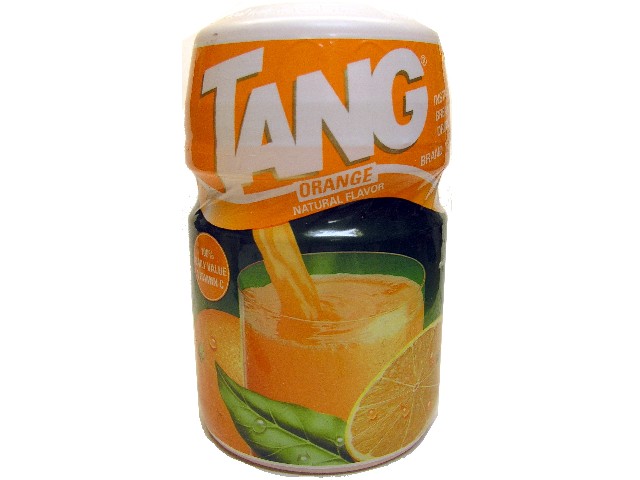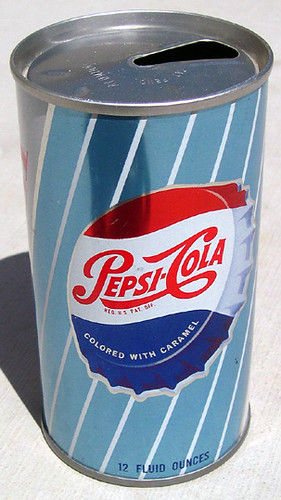Second Playlist:
1. Chatty Cathy Doll
2. Bettina Universal Hair Dryer
3. Pop-Tarts
4. Almond Joy
5. Frito Bandito Corn Chips
6. Sugar Frosted Flakes
7. Go-Go Airlines
8. Tang
9. Lucky Charms
10. Burger King
11. Ford Falcon
12. McDonald's
13. Arrid Deoderant
14. Teaberry Gum
15. Pepsi Generation
Chatty Cathy Doll
Watch the commercial
The music of commercial advertisements during the 1960s was used differently than the music of the ads seen on the flats screen TVs of 2010. As is apparent in the Chatty Cathy commercial, the music was simple and generally created for the specific product. The instrumentals heard here are very much in the background, meant to compliment, but not distract from, the vocals. The emphasis is put on the lyrics for that is where the information about the product is held. The high-pitched bell sounds and the rhyming verses trigger the memory of the target audience, the little girls who will beg their mothers for a Chatty Cathy Doll. A chorus of young female voices invites the viewer join in song, further encouraging the memory to pick up on Chatty Cathy's jingle.
Bettina Universal Hair Dryer
Watch the commercial
In this commercial many of the same tactics are employed. The instrumentals play simple sounds of bells and high-pitched strings in the background, while the Lennon Sisters sing their song of rhyming verses. The melody mimics the sound of a nursery rhyme, especially the last line, "This is the way we dry our hair with the universal dryer." Replicating the melody of a well-known nursery rhyme further encourages the viewer to remember the jingle. The sound of the vocals are motherly and soothing, as if the viewer's own mother was advising her to dry her hair with Bettina. Having the Lennon Sisters, "Singing Stars" of the 1960s, sing the vocals is a step toward a more modern approach of music in advertising. The female quartet is the 1960s version of a celebrity endorsement. However, the use of music in this advertisement is far from modern, its main purpose still being to trigger the memory with information about the product, the music itself taking a back seat to the lyrics.
Pop-Tarts
Watch the commercial
Again, simple instrumentals targeted to children paired with a catchy jingle can be found in this advertisement. The tune of the recorder with the occasional bell sound behind the chorus of children singing grabs the attention of children. The recorder is inviting for kids because it is an instrument every elementary school student is familiar with.The vocals emphasize the word "Pop-Tart" and the repetition encourages kids to sing along.
Almond Joy
Watch the commercial
It is apparent the target audience of this commercial is a bit older, and perhaps not geared toward one sex as was the case with the previous advertisements. The music here, while not quite contemporary for the 1960s, is more sophisticated. Various horns, such as clarinets, trombones, trumpets, and even a flute add more instrumental depth to this commercial. There is no jingle to steal the focus of the music, simply a pleasant background of instrumentals. The purpose of music in this advertisement is to compliment the product. The trumpet does not tell us more about the roasted almonds found in this candy bar, but the selection does compliment them nicely.
Frito Bandito Corn Chips
Watch the commercial
Music in this advertisement begins to play a different role. Introduced from Frito-Lay as a mascot for their corn chips, Frito Bandito and his mock-Mexican music were meant to perpetuate the authenticity of the chips, while they may have only perpetuated stereotypes of Mexicans and Mexican-Americans. The character asks the audience to sing along with his catchy jingle, the memory tactic we have seen over and over again. Except his music is not the simple bells sounds and gentle xylophone percussion heard previously. This ad uses a mainly guitar melody paired with Mexican-accented vocals to display this image of a gold-toothed, gun-carrying Mexican bandit, simultaneously linking that image with the music.
Sugar Frosted Flakes
Watch the commercial
In this cereal commercial another mascot asks viewers to sing along to his jingle. The tone of the instruments is deeper than heard previously, booming percussion and big tuba sounds emphasize the vastness of Tony the Tiger and add weight to his deeming the Frosted Flakes as "GREAT." Elements of the same children-enticing sounds can still be found in this commercial, the xylophone is not completely abandoned. The music in this commercial both entices children to sing along with comfortable sounds they are familiar with and encourages them to listen with the deeper, more authoritative sounds.
Go-Go Airlines
Watch the commercial
Music in this advertisement is playing a more modern role, setting a scene rather than playing accompanying a jingle. Go-Go Airlines is using upbeat, jazz style music to take viewers from their living room sofas to a jazz club or a Miami beach. The lively music is meant to change the mood, and associate this airline with a cool, hip, fun place to be.
Tang
Watch the commercial
This commercial relies heavily on music, since the only sound is the instruments. There is no jingle, no voice-overs, simply powerful trombones and tubas with percussion in the background. The music both grabs the attention of the viewer and emphasizes the actions of the characters in the video. The loud and lively music is meant to replicate the revitalization that "Tang" provides.
Lucky Charms
Watch the commercial
The music featured in this commercial is not the most powerful element of the ad as seen in the Tang commercial. The music here compliments the mystical theme with a light flute, soothing xylophone percussion, and a harp-sounding string accent. Not only does this create a magical scene, but it also plays off the Irish tone of the advertisement. Both the flute and the harp would be been common in early Irish folk music. Collectively the musical elements of this ad emphasize a feeling and a mood rather than nail a rhyme scheme into memory.
Burger King
Watch the commercial
The music of this advertisement is hardly even heard over the dialogue, but its presence enhances the authenticity of the commercial regardless. In fact, the music sounds natural to the setting:a couple of plucks of some guitar strings and a few notes on the piano. The music sounds like that of elevator music, and it could very well be a commercial featuring an elevator with this same music playing and have the same effect. This commercial is another example of how the role of music in advertisements is changing. The music here is not proving more information nor is it contributing to an annoying jingle being stuck in your head. This music is simply setting the scene, adding to the overall presentation of the commercial.
Ford Falcon
Watch the commercial
The music of this commercial (slash James Bond short) tells a story, with its intense trombone and heavy percussion. Again, we are hearing the music contributing to the scene. There are no vocals in the music, instead it plays the role of music in a movie, adding suspense and drama to the advertisement.
McDonald's
Watch the commercial
The slapstick sounding instrumentals of booming horns, toy piano notes, and even bike horns adds to the dramatic humor of this McDonald's commercial. Just as Ronald McDonald resembles a clown, the music resembles that of a circus, perpetuating the idea that McDonald's is a fun and funny place to eat. This music draws the attention of children and gives them a notion that the restaurant will be as much of a spectacle as a real circus show. This commercial contains no information about the food McDonald's serves, speaks nothing of the quality or experience the customer will receive, and instead relies on the music to create the image of the environment without mentioning it in words.
Arrid Deodorant
Watch the commercial
Music plays an active role in this commercial; the guitar is both a part of our soundscape and that of the characters in the commercial. The commercial features an "active" American family, and therefore having the music not only in the background but a part of the action emphasizes the power of Arrid Deodorant. The guitar is an important piece of American roots music, and is used as the perfect accent for this American family. The music here is again adding to the setting of the commercial, and similar to the Mitsubishi commercial of the contemporary playlist, the characters are engaging with it and living in the space it is creating.
Teaberry Gum
Watch the commercial
With only one opening line and one closing line of dialogue, music plays a significant role in this gum commercial. The ad features various people dancing the "Teaberry shuffle" to the sound of jazz-like music. The music is an upbeat combination of drums, trumpets, guitar, and xylophone, resulting in an atmosphere of dance and movement. As we have seen increasingly more often throughout this decade, the music featured in these commercials has less and less to do with the product and more to do with the mood the advertisement is meant to convey.
Pepsi Generation
Watch the commercial
Similar to the previous two commercials, this commercial has an active theme, emphasizing youth and associating the product with movement and energy. The music in this advertisement imitates that theme with jazz qualities of various booming horns and subtle percussion. Even while dialogue is being spoken about the product a clarinet playing can still be heard in the background, keeping that air of movement. The commercial takes place on a mountain road, opening with a tribal sounding solo while the picture surveys the setting. As soon as the characters are found zipping around the corner of the mountain on a motorcycle the music drastically changes to the jazz influenced, upbeat tune which plays for the rest of the advertisement. This almost unnoticeable shift gives Pepsi both the wisdom of age and the vitality of youth. Contrasting these two things also emphasizes the energy of the later.














